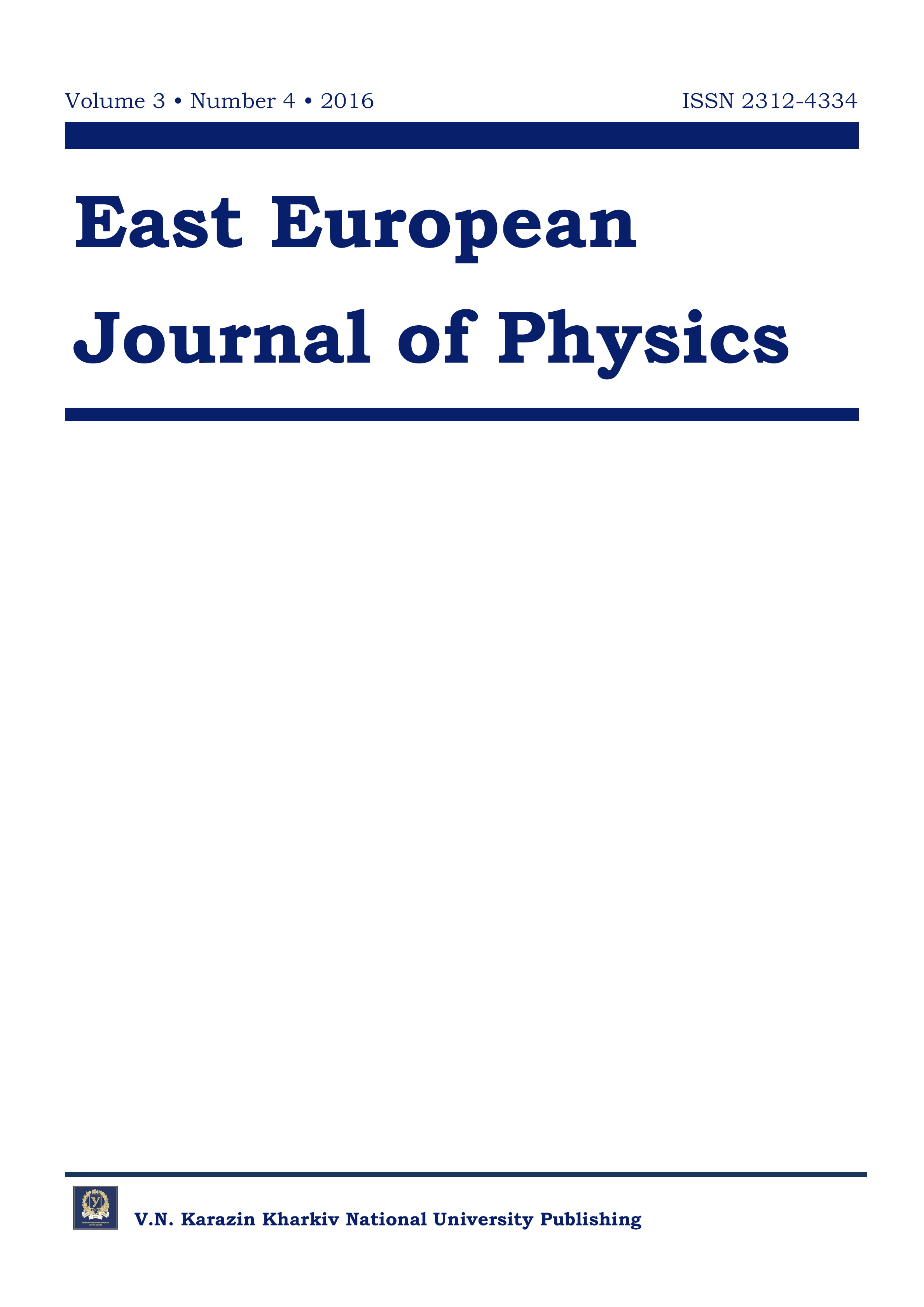Cable Free Transmission of Electricity: from Nikola Tesla to Our Time
Abstract
Model of Earth charge resonant oscillations excitations based on Tesla experiment, was offered. Solutions of d'Alembert wave equations for electric and magnetic potentials of the charged perfectly conductive sphere were found. Graphic analyses of perturbed potential distribution on the Earth surface was provided. It was shown that obtained solution provides adequate description of Tesla experiment on wireless transfer of electricity conducted in Colorado Springs in 1899 – 1900. In the very low-frequency area of the electro-magnetic oscillations spectrum it was offered to consider the Earth as capacitors battery, consisting of two put one into another perfectly conductive spheres, between which thin dielectric layers is placed. Own oscillation frequencies of the Earth charge were determined in this area. It was shown that these frequencies most precisely correspond to experimentally measured Schumann resonances.
Downloads
References
Nikola Tesla “Tesla. Colorado-Springs. Dnevniki [Diaries]. 1899-1900”: Samara: Izdatelskiy dom “Agni”, 2008. – 460p. (in Russian)
John O’Neil. Elektricheskiy Prometey [Electric Prometheus] // Izobretatel i racionalizator [Inventor and Innovator]. – 1979. – No. 4–11. (in Russian)
Schumann W.O. On the free oscillations of a conducting sphere which is surrounded by an air layer and an ionosphere shell // Z. Naturforsch. – 1952. - Vol.7A. – P.149–154. (in German)
Nickolaenko A, Hayakawa M. Schumann Resonance for Tyros. - Springer Geophysics, Japan, 2014. - 348 p.
Toledo-Redondo S., Salinas A., Morente-Molinera J.A., Méndez, Fornieles J., Portí J., Morente J.A. Parallel 3D-TLM algortithm for simulation of the Earth- A. ionosphere cavity // J. Comp. Phys. – 2013. – Vol.236. – P.367–379.
Tablicy fizigheskih velichin [Tables of physical quantities.]. Ed. Akad. I.К. Кikoin. - М.: Аtomizdat, 1976. – 1008p. (in Russian)
Vernadskiy V.I. Himicheskoe stroenie biocferi Zemli i ее okruzhenie [The chemical structure of the Earth's biosphere and its environment.]. - М.: Nauka, 2001. – 376p. (in Russian)
Sivuhin D. V. Obshchiy kurs fiziki. Ucheb. posobie: Dlya vuzov [The general course of physics. Handbook for University]. Vol. 5. – Т.III. Elektrichestvo [Electricity]. — 4-е isd., stereot. — М.: Fizmatlit; Izd-vо МFТI, 2004. – 656p.
Тамм I.Е. Оsnovy teorii electrichestva: Ucheb. posobie dlya vuzov [Fundamentals of the theory of electricity. Handbook for University].— 10-е izd., ispr.—М.: Nauka. Gl. red. fiz.-маt. lit., 1969. - 504p. (in Russian)
Кuznecov D.S. Specialnie funkcii [Special functions.]. - М.: Visshaya shkola, 1965 – 424p. (in Russian)
Тihonov А.N., Samarskiy А.А. Uravneniya matematicheskoy fiziki [The equations of mathematical physics]. - М.: Nauka, 1977. – 735p. (in Russian)
Tesla, Nikola, 1856-1943. Nikola Tesla on his work with alternating currents and their application to wireless telegraphy, telephony, and transmission of power: an extended interview / Leland Anderson, editor. Originally published: Denver, Colo: Sun Pub., 1992, 242p.
Simões F., Pfaff R., Freudenreich H. Observation of Schumann Resonances in the Earth’s Ionosphere // Geophysical Research Letters. – 2011. – Vol. 38. – P.L22101, doi:10.1029/2011GL049668.
Authors who publish with this journal agree to the following terms:
- Authors retain copyright and grant the journal right of first publication with the work simultaneously licensed under a Creative Commons Attribution License that allows others to share the work with an acknowledgment of the work's authorship and initial publication in this journal.
- Authors are able to enter into separate, additional contractual arrangements for the non-exclusive distribution of the journal's published version of the work (e.g., post it to an institutional repository or publish it in a book), with an acknowledgment of its initial publication in this journal.
- Authors are permitted and encouraged to post their work online (e.g., in institutional repositories or on their website) prior to and during the submission process, as it can lead to productive exchanges, as well as earlier and greater citation of published work (See The Effect of Open Access).








